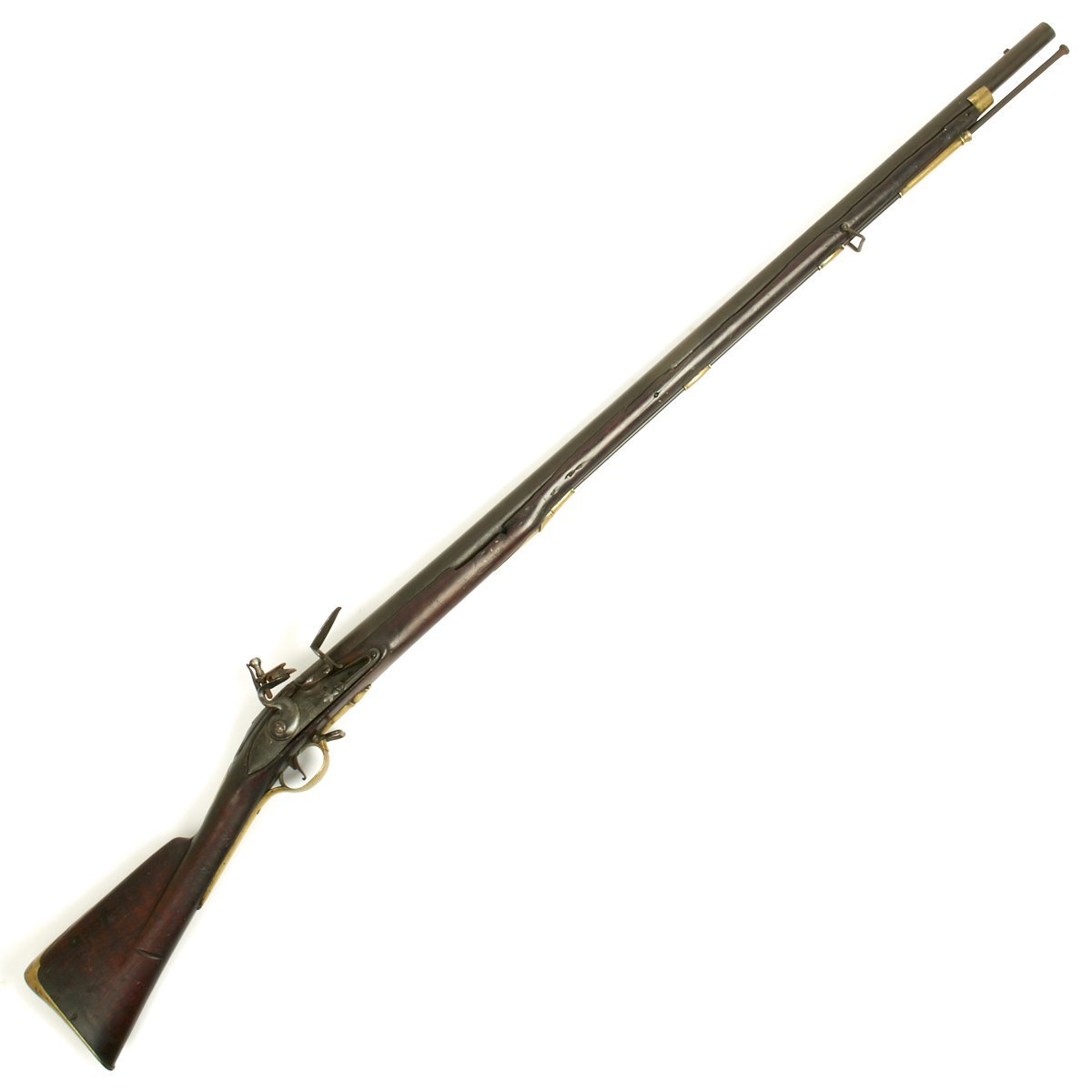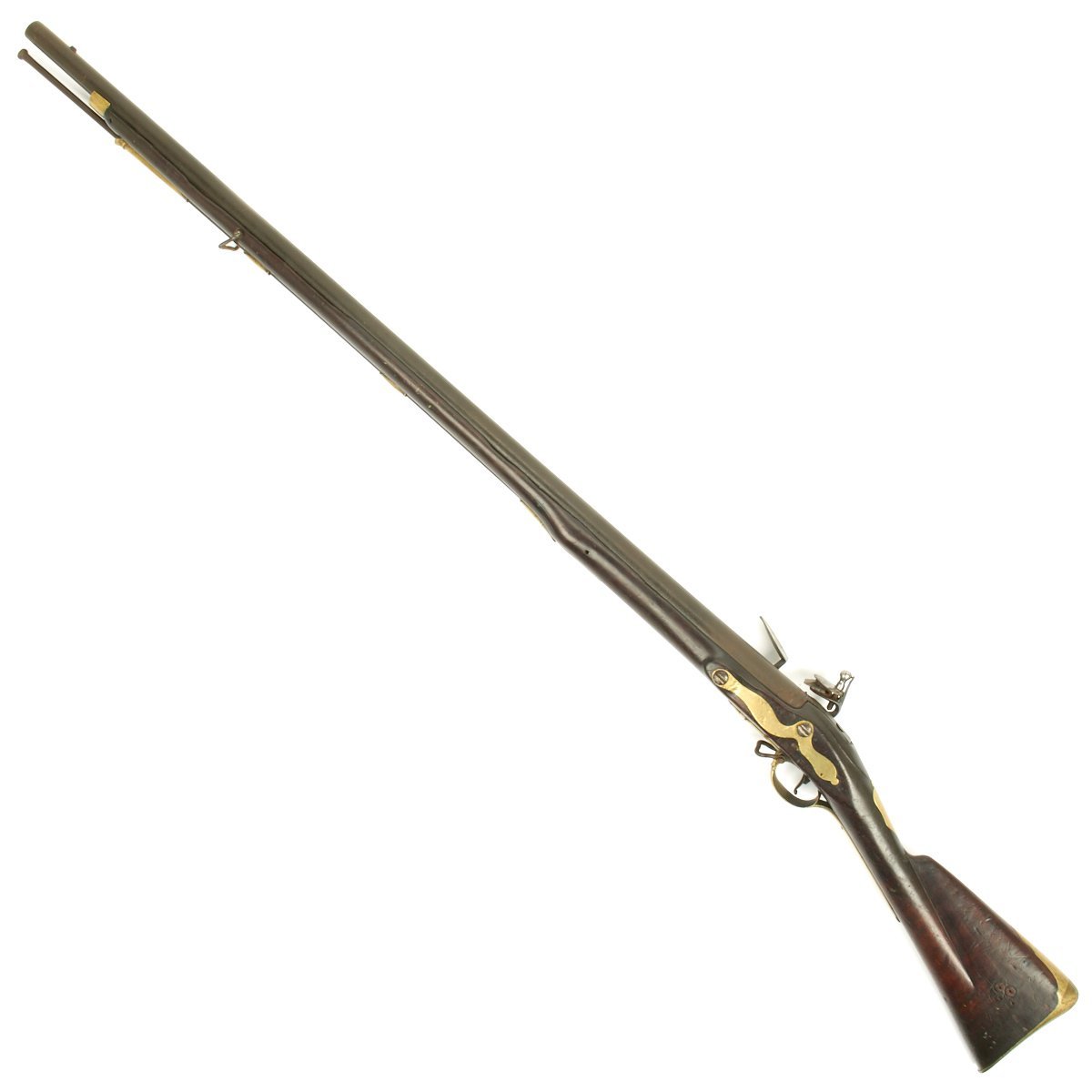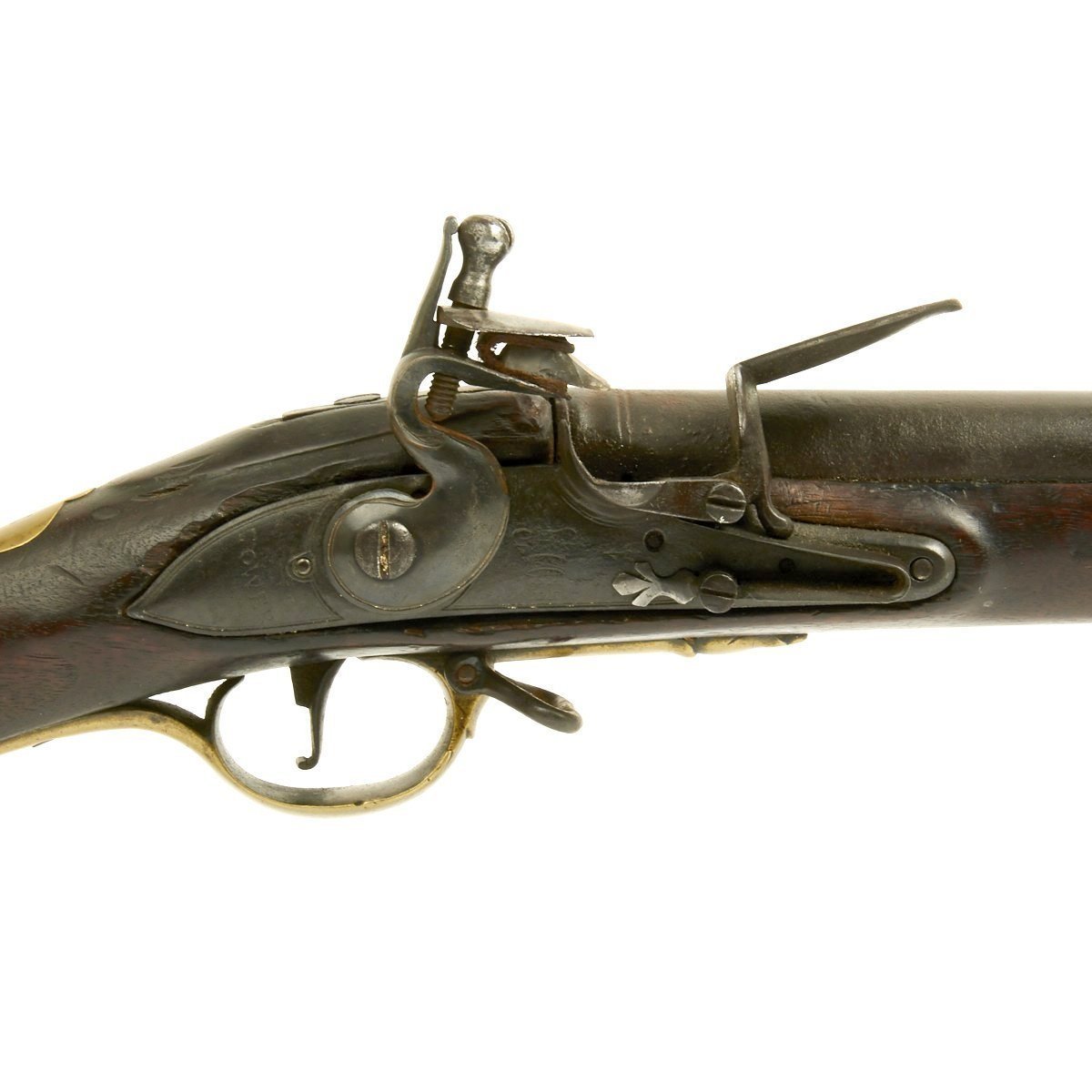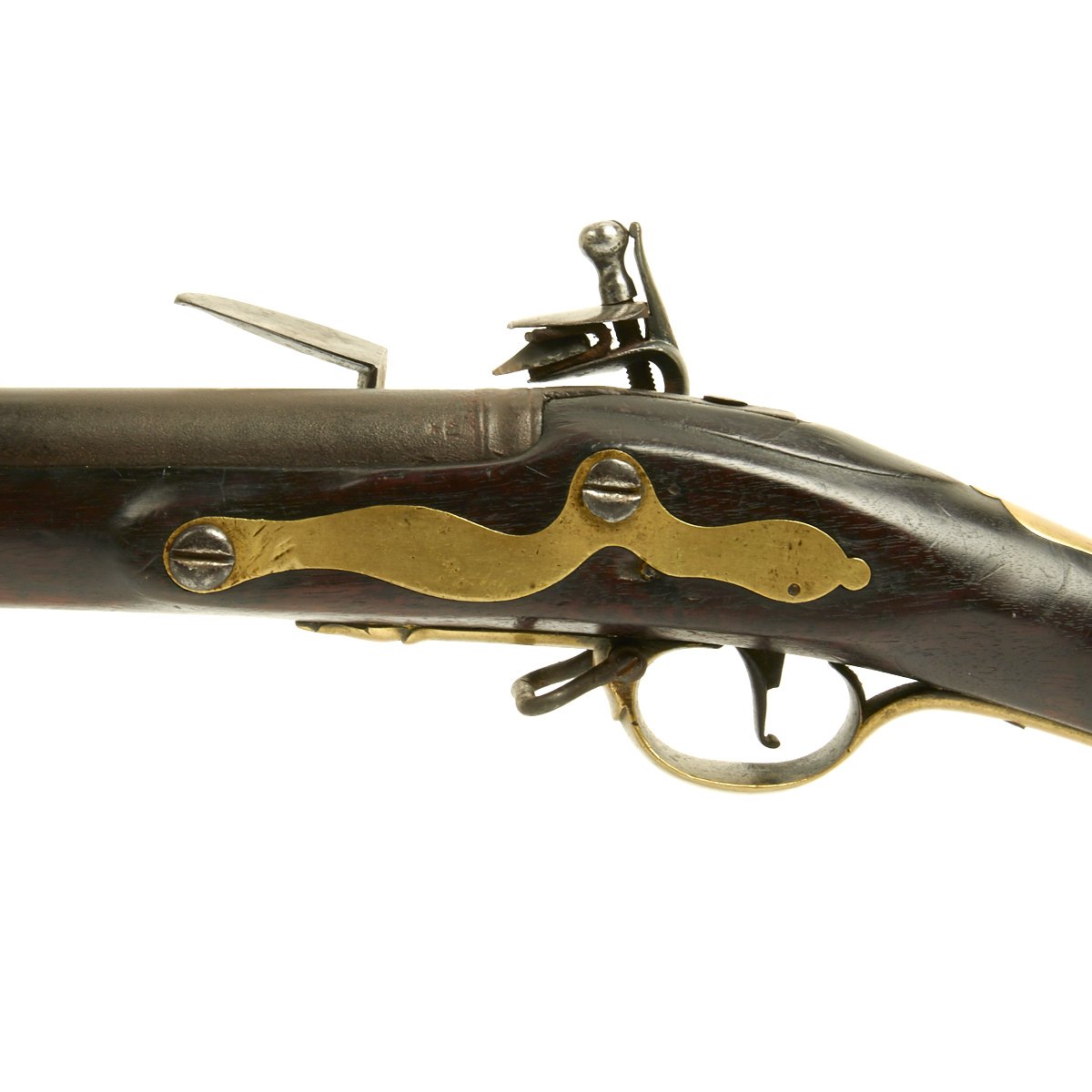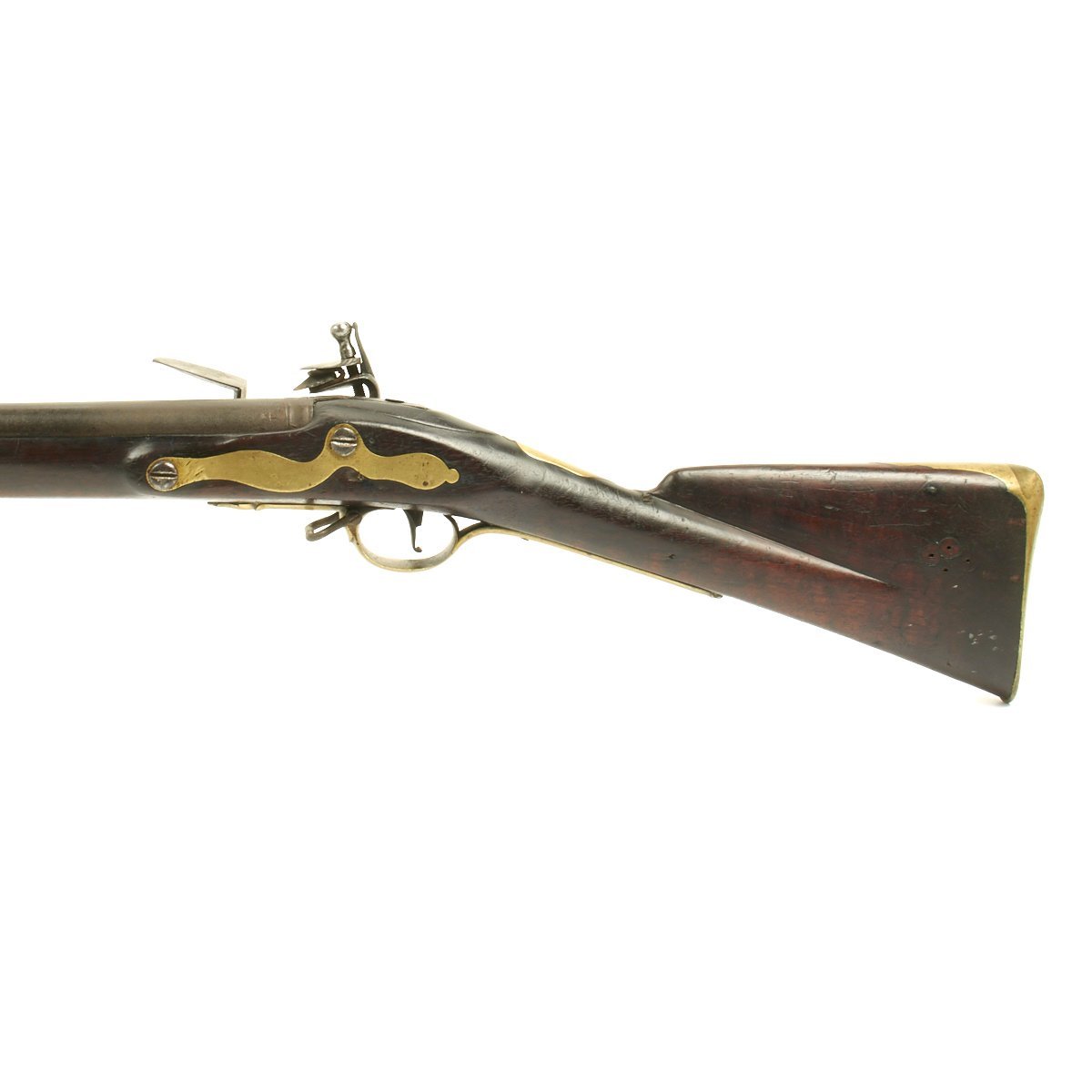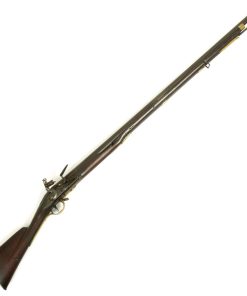Original British P-1769 Short Land Pattern Brown Bess Musket with Faint Regimental Marking Original Items
$ 12.500,00 $ 3.125,00
Original Item: Only One Available. This is what we all look for, the British Musket of the AMERICAN REVOLUTION! Featuring all the classic attributes of a Short Land Pattern Brown Bess musket including a 42 inch long .75 bore barrel, brass fittings including butt plate, side plate, trigger guard with acorn finial, escutcheon, nose cap and four ram rod pipes. The second down pipe is unflared meaning this a a 1769 pattern as “Pratt” trumpet mouthed second pipes were not introduced until 1779.
The lock is marked with a CROWN over G.R. with TOWER across the tail and showing an inspector mark. The cock, or hammer, has correct leaf style top jaw support, the top jaw post that was fitted with a rear slotted top jaw plate was not introduced until 1777. There is no hole in the top jaw screw which is correct for the 1769 pattern.
The musket shows use, a small piece of wood is absent on the right side next to the throat pipe but it clearly went missing almost at the time of service, the damage is so old. The lock functions correctly, holding at half cock, and firing at full cock. We looked at the bore, and it looks fairly good, though it does have some rust and pitting from long age and service.
The musket is marked on the brass escutcheon with company marking of M / 18 and there are traces of a Regimental designation along the top of the barrel showing a faint numeral 9.
We suspect this was originally for the 9TH REGIMENT OF FOOT but abbreviated to perhaps 9 – RGT.
If the 9TH REGIMENT is confirmed, it has a very interesting service history:-
The regiment was raised for the English Army in Gloucester by Colonel Henry Cornewall as Henry Cornewall’s Regiment of Foot at the request of James II in 1685 as part of the response to the Monmouth Rebellion. It served in various conflicts in England, and went to Denmark as part of the War of Spanish Succession in 1702. The regiment was then based on the island of Menorca from summer 1718 to 1746. The regiment was renamed the 9th Regiment of Foot in 1751 when regiments were known by number instead of the name of the Commanding officer. It then served in the Seven Years war, and was subsequently moved to St. Augustine in Florida, where it remained until 1769.
In April 1776, the regiment embarked for Canada as part of an expedition under Major-General John Burgoyne and took part in the Siege of Fort Ticonderoga and the Battle of Fort Anne in July 1777 during the American Revolutionary War. It surrendered at the Battle of Saratoga in autumn 1777 and its men then spent three years as prisoners of war as part of the Convention Army.
In lovely matured, fully operational condition, ready to display.
Specifications:
Years of Manufacture: Circa 1770
Caliber: .75″ Musket
Ammunition Type: Lead Ball & Powder
Overall Length: 58 inches
Action: Flintlock
Feed System: Muzzle-Loaded
NOTE: International orders of antique firearms MUST be shipped using UPS WW Services (courier). USPS Priority Mail international will not accept these.
Fast Shipping with Professional Packaging
Thanks to our longstanding association with UPS FedEx DHL, and other major international carriers, we are able to provide a range of shipping options. Our warehouse staff is expertly trained and will wrap your products according to our exact and precise specifications. Prior to shipping, your goods will be thoroughly examined and securely secured. We ship to thousands clients each day across multiple countries. This shows how we're dedicated to be the largest retailer on the internet. Warehouses and distribution centres can be located throughout Europe as well as the USA.
Note: Orders with more than one item will be assigned a processing date depending on the item.
Before shipping before shipping, we'll conduct a thorough inspection of the items you have ordered. Today, the majority of orders will be delivered within 48 hours. The delivery time will be between 3-7 days.
Returns
The stock is dynamic and we cannot completely manage it because multiple stakeholders are involved, including our factory and warehouse. So the actual stock may alter at any time. It's possible that you may not receive your order once the order has been made.
Our policy is valid for a period of 30 days. If you don't receive the product within 30 days, we are not able to issue a refund or an exchange.
You can only return an item if it is unused and in the same state as the day you received it. You must have the item in its original packaging.
Related products
Uncategorized
Uncategorized
Uncategorized
Angolan Rebel 1970s era 60mm Inert Display Mortar from Angolan Civil War Original Items
Uncategorized
Armored Burgonet Helmet & Polearm from Scottish Castle Leith Hall Circa 1700 Original Items
Uncategorized
Uncategorized
Uncategorized
Uncategorized
Uncategorized
Uncategorized
Uncategorized
Uncategorized
Uncategorized
Armoured Fighting Vehicles of the World: AFVs of World War One (Hardcover Book) New Made Items
Uncategorized
Uncategorized
Uncategorized
Uncategorized
